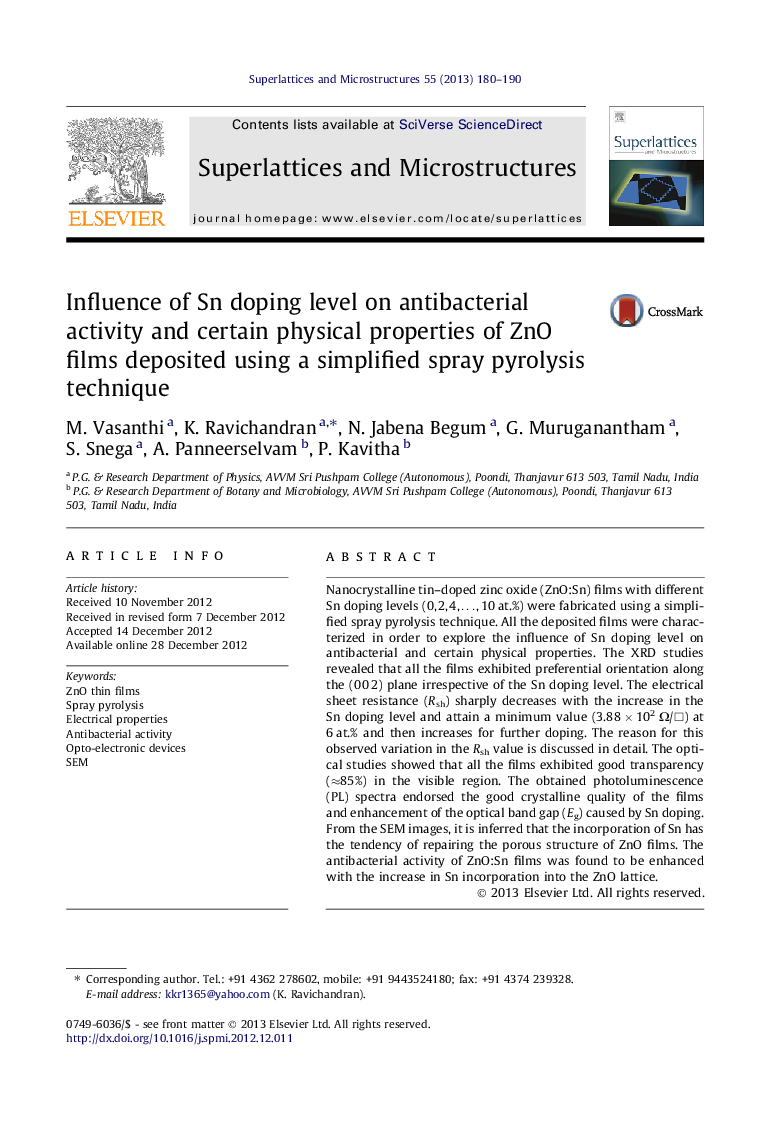| Article ID | Journal | Published Year | Pages | File Type |
|---|---|---|---|---|
| 1553847 | Superlattices and Microstructures | 2013 | 11 Pages |
Nanocrystalline tin–doped zinc oxide (ZnO:Sn) films with different Sn doping levels (0, 2, 4, … , 10 at.%) were fabricated using a simplified spray pyrolysis technique. All the deposited films were characterized in order to explore the influence of Sn doping level on antibacterial and certain physical properties. The XRD studies revealed that all the films exhibited preferential orientation along the (0 0 2) plane irrespective of the Sn doping level. The electrical sheet resistance (Rsh) sharply decreases with the increase in the Sn doping level and attain a minimum value (3.88 × 102 Ω/□) at 6 at.% and then increases for further doping. The reason for this observed variation in the Rsh value is discussed in detail. The optical studies showed that all the films exhibited good transparency (≈85%) in the visible region. The obtained photoluminescence (PL) spectra endorsed the good crystalline quality of the films and enhancement of the optical band gap (Eg) caused by Sn doping. From the SEM images, it is inferred that the incorporation of Sn has the tendency of repairing the porous structure of ZnO films. The antibacterial activity of ZnO:Sn films was found to be enhanced with the increase in Sn incorporation into the ZnO lattice.
► Interesting study on antibacterial activity of ZnO:Sn films. ► A new interpretation on critical doping level of Sn in ZnO films. ► Corroboration among electro-optical, surface, PL and antibacterial studies.
